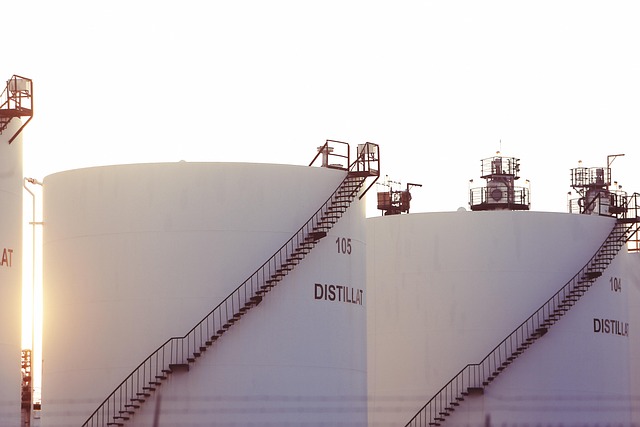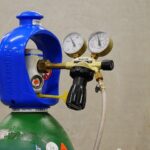Across India, storing petroleum in a safe way is a critical task. Generally, AGSTs or Above Ground Storage Tanks fall under the Petroleum Rules, 2002. It is under the Petroleum Act, 1934. All these regulations are taken care of by the PESO or the Petroleum and Explosives Safety Organization. In this way, the organization can ensure public safety. Moreover, it can maintain operational integrity and even prevent environmental damage.
So, let’s talk about licensing under Petroleum Act 2002 in Gujrat in detail below.
1. Parameter Applicable
- Licensing Mandate
Under the Rule 116, no one has the right to store petroleum in AGSTs if they don’t have a valid licence. Also, this licence has to be under the 2002 rules. However, there are two exceptions:
Well-head tanks.
Transit cargo storage within a port under some specific conditions.
- Key Definitions
They will need things like:
Tank: A proper receptacle for petroleum. It must exceed 1000 litres.
Installation: Premises mainly created for storing petroleum in bulk.
Protected Place: Areas around installations must be clear of public access. Also, those must not have dwellings, roads, power lines, etc.
All these are some vital parameters that will clearly define the scope of licensing and also safety measures. All these will help to get you formal approvals for storing petroleum.
2. Licensing Requirements
Licensing AGSTs facilities usually include several things. Those are following all types of important administrative, technical, and, of course, procedural norms.
- Preliminary Plans
If you want to apply, then you must submit scaled drawings that must show:
Specifics of your tank, including its materials and capacity.
Provisions for firefighting, along with protected areas within a 100 m radius.
Drainage design, enclosures, piping, venting, etc.
All these will ensure that you are following all the rules before you get approval from PESO.
- Documents Required
You have to show a few important documents, including:
Bank draft for licensing fee.
Application Form XV(AG) tailored for AGST licensing.
Your Aadhar/PAN, incorporation papers, and your proof of ownership or lease.
Four copies of approved drawings.
Proof of your financial capability.
Safety certificate, site plan, NOC from local authorities. Those may include District Magistrate and the fire division.
- Validity and Fees
Let’s break down the licensing fees below:
Initial approval of plan: 2000 rupees.
Grant of license: 2000 rupees.
Fees for Renewal (every three years): 2000 rupees.
For plan review, you may have to spend 400 rupees more as additional scrutiny charges.
- Certification and Inspections
Tank Testing (under Rule 126): An expert, recognized by PESO, will conduct pressure tests. For this, he will use water and check your new or repaired tanks. Then, he will issue a test certificate. You must submit it with your proper application.
Safety Certificate: After construction, a qualified engineer will inspect the site and issue safety clearance.
These steps are vital that will make sure that your structures are technically compliant.
3. Safety Concern
Safety is very important in the case of the Petroleum rules. Also, several provisions are there to properly address access control, structural integrity, fire risks, etc.
- Fire Safety Rule (Rule 117)
You have to strictly prohibit ignition sources, smoking, matches, and also, open flames near your storage areas.
You need to store a few mandatory fire-fighting tools. Those may be portable dry chemical powder extinguishers at important locations.
- Cleanliness and Supervision (Under Rules 118-119)
You must have a responsible and trained supervisor who will oversee all operations. Also, that expert has to be quite familiar with license conditions.
All the surrounded areas have to be free of waste, debris, and also vegetation.
- Environment Protection and Drainage (Rule 120)
You need to properly illustrate all your drain layouts and the position of valves on your submission plans.
Tank enclosures must have drainage systems. These will prevent water accumulation. All your drainage outlets must be above ground level, also must include valves. Those valves have to be operable externally.
- Access Control and Restriction (Rule 121-122)
You need to prevent unauthorized public access at all times.
All your installations have to be fenced. Also, your service stations must have 1.2 m boundaries on non-driveway areas.
You cannot repurpose your AGST installations if you don’t have prior written permission. You need to obtain this permission from the Chief Controller.
- Tank Marking and Construction (Rules 123-124)
Material and Capacity: You must use materials like steel or iron per the IS codes for your tanks. However, you can use some alternative materials only with proper approval. Your tank’s capacity has to be conspicuous.
Foundation: All your tanks must stand on non-combustible and firm bases.
Usage Space: You need to reserve a minimum 5% of tank’s capacity or as per code- which one is less for the air gap.
- Static Safety and Signage
You must prominently display all types of warning notices. Those must include no smoking zones, unauthorized access areas, ignition hazards, and more.
Also, you need to take proper measures to prevent dangerous static buildup. So, choose proper earthing, bonding, etc.
4. Periodic Requirements
Over the period of license validity and beyond, you must maintain a few post-licensing needs. Those may be:
- Testing and Inspections (Rule 177)
All your tools, including plant machinery and fire fighting systems, have to be carefully inspected and tested regularly. Also, this needs to done according to practical considerations. Moreover, you have to maintain correct records of those inspections.
- License Renewal
The license expires after three years. So, you need to renew it at the right time. In case of failure, you may face regulatory penalties or even a shutdown.
- Regular Risk Assessments and Safety Audits
Regulatory audits usually need periodic audits for all your LPG installations and storage facilities. This will ensure that you are following updated safety practices and responding to risk changes or neighbourhood developments.
- Repair Handling
Any notable repairs or replacements have to be followed by a complete retesting. This must be done by an expert and you will get a recertification. So, when you will submit this updated documentation to PESO, you will be following the Rule 126.
- Record-Keeping
You need to keep all the records of important tasks and information for future inspections and audits of PESO. For this, keep all your maintenance logs, safety audits, records of inspections, NOCs, and even all those renewal documents.
With continuous compliance, you can easily avoid enforcement actions. Moreover, you will build trust with all important authorities. So, these are some vital pieces of information regarding Licensing under Petroleum Act 2002 in Gujrat.
Why Are Licensing and Compliance Vital?
There are many reasons why both licensing and compliance are so important. Those include:
- Legal Protection
When you operate without a license, it may result in criminal liabilities and heavy fines.
- Risk Mitigation and Safety
With proper safety measures, you can pre vent spills, fires, and also catastrophic failures.
- Community and Environmental Welfare
With proper access control and drainage systems, you can easily protect all your neighboring properties and public health.
- Operational Integrity
When you follow the guidelines for installations and work with some trained people, you can enjoy responsive maintenance and systematic recordkeeping.
Important Rules Regarding Above Ground Storage Tank Licensing Under Petroleum Act 2002
According to the Petroleum Rules, you must carry out an inspection. It has to be based on the approved drawing by the statutory authority. You will get two types of certificates against Rule 126 and 130. The first one is for the individual testing of tank by hydro. The second one is famous as safety certificate. It helps in the safety inspection for all tanks and tools. It also helps in other safety inspections for other equipment. Those may be earth pits, unloading and loading area, drain valve, piping, and more.
To issue the certificates under Rules 126 and 130, you must provide below minimum compiled data.
Also, you will need some other important documents like:
Tank GA drawing.
Valid license copy, approved by PESO.
Settlement report of tank. It has to be before tank water filing task and after empty tank.
Annexure 1- Tank Details.
Annexure 2- Tank Fittings Data.
Annexure 3- Piping hydro test details.
Annexure 4- Pump Motor Details.
Annexure 5- MOV details.
Annexure 6- Panel & Junction box.
Annexure 7- Flameproof Electrical Items.
Annexure 8- Earth Pit Resistance Test Report.
Dyke wall volume calculation.
Just by following the rules of licensing for Above Ground Storage Tanks under the Petroleum Rules, 2002, you will get the right ideas for your business. This act includes planning and continuous monitoring with proper safety measures. All the rules under this act is created to protect against all types of risks in this industry. Thus, you will enjoy remarkable operational integrity.
So, when you want to follow the rules of Licensing under Petroleum Act 2002 in Gujrat, you must trust a professional. Here comes the name Trivedi & Associates. This company already has the right professionals who will guide you through this procedure. Hence, you will always have the best ideas and assistance if you want to work with Licensing under Petroleum Act 2002 in Gujrat.




